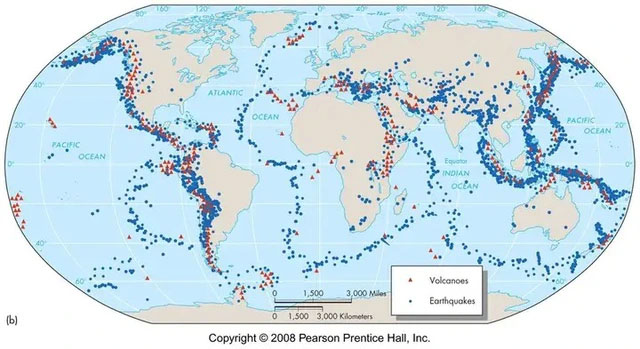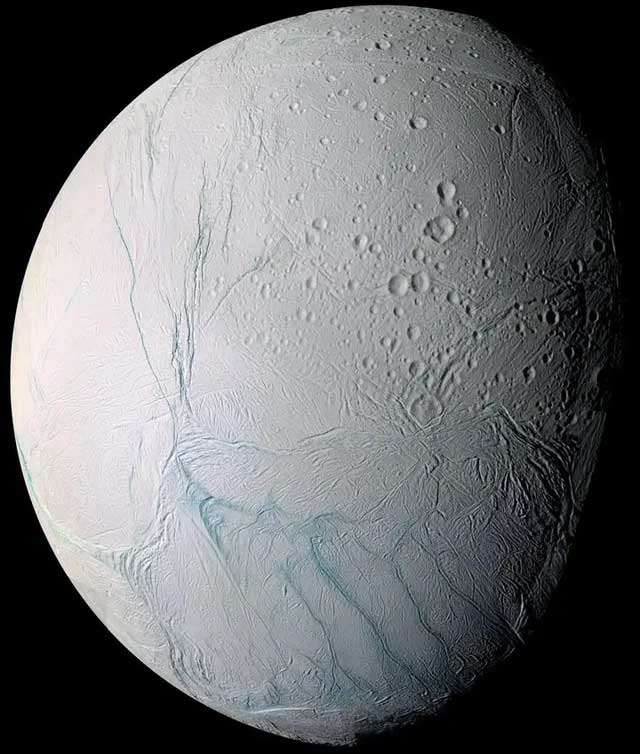What would happen if Mars and Earth switched places in the Solar System?
If Mars and Earth switched places in the Solar System, life on Earth would not be able to exist and we would no longer be habitable.
The impact of losing and gaining the Moon
As for Earth, the Earth-Moon system is a planet-satellite system that has been stable for billions of years, Earth has also succeeded in locking the Moon's tides , i.e. the rotation period of the Earth and The rotation period of the Moon is exactly the same - the Moon always faces the Earth. Ocean tides and solid tides on Earth are heavily influenced by the Moon. The moon is of great significance in maintaining the stability of the Earth's rotation axis, slowing down the Earth's rotation speed/extending the Earth's day.
If the Earth loses the Moon, it means that the current stable state of the Earth's crust (related to solid tides) and the tidal state of the ocean will be greatly affected , most obviously in the regions Seismic and active volcanoes around the world will be affected. In a short period of time, many unprecedented volcanic eruptions/earthquakes/tsunamis will occur around the world and most living organisms on Earth will be on the brink of extinction. In the long term, the instability of the Earth's axis will likely lead to serious global climate changes , and mass extinction of species will continue to occur.

Map of the distribution of seismic and volcanic zones on Earth, including many densely populated areas. These places would have super strong earthquakes and volcanoes and humanity would basically be destroyed if it weren't for the Moon.
For Mars, the difference in mass between itself and the Moon is only 11 times (this number is 80 times when compared between Earth and Moon), it is very likely that Mars' gravity will It is impossible to hold the Moon tightly when it is in Earth's current position . It is difficult for Mars and the Moon to form a stable system. It may be subject to additional impacts from nearby Venus and the current Earth orbit. From there, Mars may not be able to stay in place. Earth's current position. Its orbit will become chaotic.
Differences in solar energy reception
Several rovers carrying solar panels have demonstrated that the intensity of solar radiation near Mars is only half that of Earth.
If the amount of solar energy received by the Earth were greatly reduced, the greenhouse effect of the atmosphere and even volcanic eruptions would become almost ineffective in "warming" the Earth with a decrease of this energy source. This means global temperatures will plummet.
What's even scarier is that more than 70% of the Earth's surface is ocean, which will cause global freezing , the frozen surface will reflect more sunlight, causing the energy received to decrease. Most plant species that rely on solar energy and have difficulty adapting to low-temperature environments are extinct, leading to the collapse of the ecological chain.
At this time, only a few low-level organisms that rely on the heat energy of the Earth's interior can survive under thousands of meters of ice.

The surface of Enceladus is covered with thousands of meters of ice. Under the ice is an ocean 10 km deep. The surface reflects almost 100% of sunlight. It is a large mirror of the Solar System, and only Saturn's strong tidal gravitational friction causes the ice inside to melt into oceans.
For Mars, having more solar energy actually brings no benefit. Due to Mars' small size, the liquid inner core has condensed, resulting in an extremely weak magnetic field. Upon reaching the vicinity of Earth, air would be rapidly lost, the only dry ice and ice in the polar regions would evaporate, and Mars would become completely desolate.
Impact on the moons of Mars and the asteroid belt
Phobos and Deimos are too close to Mars, 6,000 and 13,000 km respectively, much closer than the Moon. Considering that Earth has a much larger radius and is much more massive than Mars, Phobos would lie within the Roche limit - the closest distance two celestial bodies can get - of Earth, where it would be absorbed by the tides. Earth's conductors tear into pieces, forming rings around Earth similar to the rings of Saturn.
This also means that occasionally giant meteorites fall back to Earth.

Saturn tears matter at its Roche limit into pieces, forming giant rings tens of thousands of kilometers wide.
Due to the influence of Earth's gravity, the asteroid belt will also be greatly disturbed, and the number of asteroids near the Earth will suddenly increase, which also means that the number of asteroids near the Earth will suddenly increase. The fate of the Earth is in danger, not to mention life.
In short, swapping places between Mars and Earth would be a disaster for life on Earth. In addition, this position exchange can also affect other planets in the Solar System, disrupting the balance and causing unpredictable consequences.
- The explorer Mars had trouble
- The Earth may have catastrophic collisions with Mars
- The Solar System has never been this beautiful
- What if Earth was the only planet in the Solar System?
- How is Mars different from Earth?
- What mystery of Mars awaits discovery?
- Beautiful photo from the Solar System
- Learn the secret of Mars formation
- Admire the first photos of planets in the solar system
- The Solar System and NASA's great discoveries
- 'Move' up ... Mars, how much will it cost you?
- How to transform Mars into a Second Earth
 Van Allen's belt and evidence that the Apollo 11 mission to the Moon was myth
Van Allen's belt and evidence that the Apollo 11 mission to the Moon was myth The levels of civilization in the universe (Kardashev scale)
The levels of civilization in the universe (Kardashev scale) Today Mars, the sun and the Earth are aligned
Today Mars, the sun and the Earth are aligned The Amazon owner announced a secret plan to build a space base for thousands of people
The Amazon owner announced a secret plan to build a space base for thousands of people